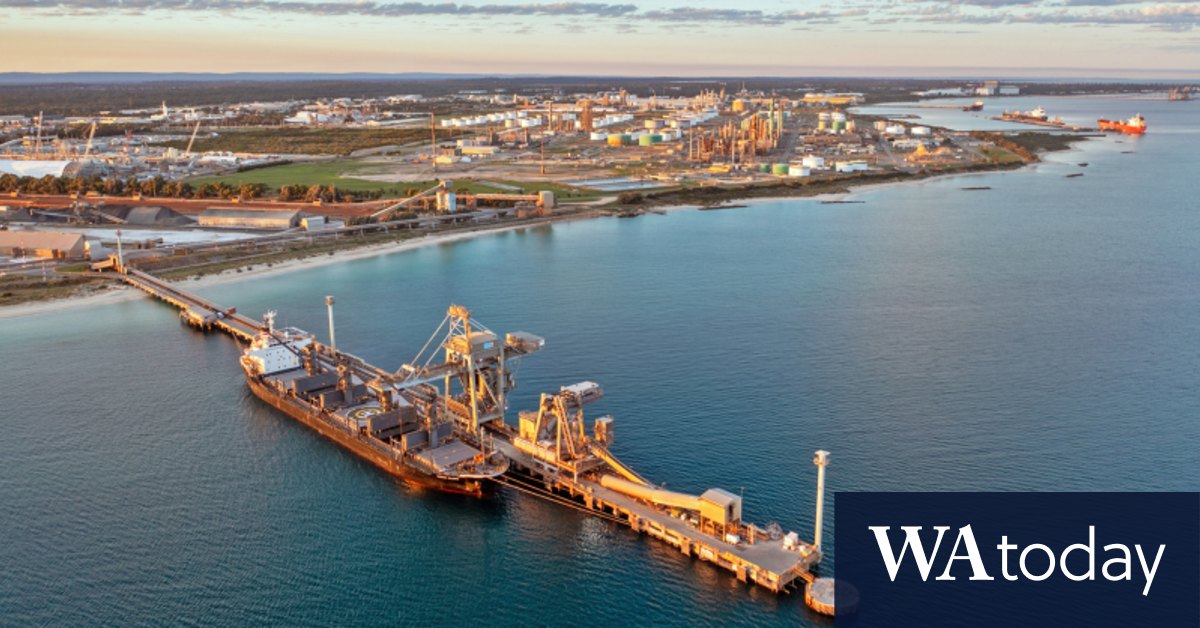One issue has been a long-term concern – preserving a buffer between industrial and residential areas.
Kwinana benefits from a skilled workforce nearby, a coastal location and industries that supply each other with products. Credit: Kwinana Industries Council
“There are a number of property developers that have made it very clear they want to get their hands on that land for residential purposes,” he said.
“It’s not the right place.”
The most prominent of those developers – not named by Wilkinson – is Nigel Satterley, who has long wanted to develop land at Mandogalup near Alcoa’s red mountain of bauxite processing waste. The billionaire stopped donating to the Liberal Party when it tried to legislate a buffer zone in 2016.
Harrison said Cockburn Cement’s lime plant in Munster, found guilty of breaching environmental laws in 2022, was an example of a facility that should not have been built in that area and an example of what a buffer zone could avoid.
“Successive governments haven’t properly dealt with it,” Harrison said, adding it was time to put the issue to bed so companies had the confidence to invest.
“I’m hoping that in a few years’ time … I’m not still talking about buffer zones.”
Land for heavy industry is at a premium in Kwinana, with almost all of it either used or allocated to potential new developments, including a Woodside hydrogen plant and a plot for IGO and Andrew Forrest’s Wyloo to build a battery minerals facility.
Harrison said companies needed to know they had land to finish design and attract finance, but the option could not be indefinite.
“We don’t want to have land banking in Kwinana,” he said.
Loading
While new investors jostle for space, some of Kwinana’s foundation tenants are winding down, opening up possibilities for the reuse of land.
BP closed its oil refinery in 2021, with plans to make hydrogen and clean fuels at the site.
Alcoa will stop producing alumina at Kwinana this year, and the closure is widely expected to be permanent, which, after an expensive clean-up, would allow a vast area to be reused. “There’s some interesting decisions to be made going forward there,” Harrison said.
Kwinana has an infrastructure crunch
Increasingly the market will demand Kwinana’s products be made with few or low carbon emissions, which requires gas to be swapped out for electricity and for that power to come from wind and solar farms.
But for Harrison, the problem is “we cannot get more electrons into Kwinana.”
He wants to see funds for beefed-up transmission capacity in the next budget and road and rail upgrades slated for the future Westport container terminal to be bought forward. And his members are as frustrated as the resource sector by the time it takes to deal with multiple government agencies and obtain approvals.
“The place is already at capacity, the roads are chockas, you’re running a rail network which is a single line in and out,” he said.
“It’s not a recipe for success.
“There needs to be a coordinated single view of government because if we are going to drag our heels through bureaucratic red tape and green tape, opportunities will go elsewhere.”
Get the day’s breaking news, entertainment ideas and a long read to enjoy. Sign up to receive our Evening Edition newsletter.

